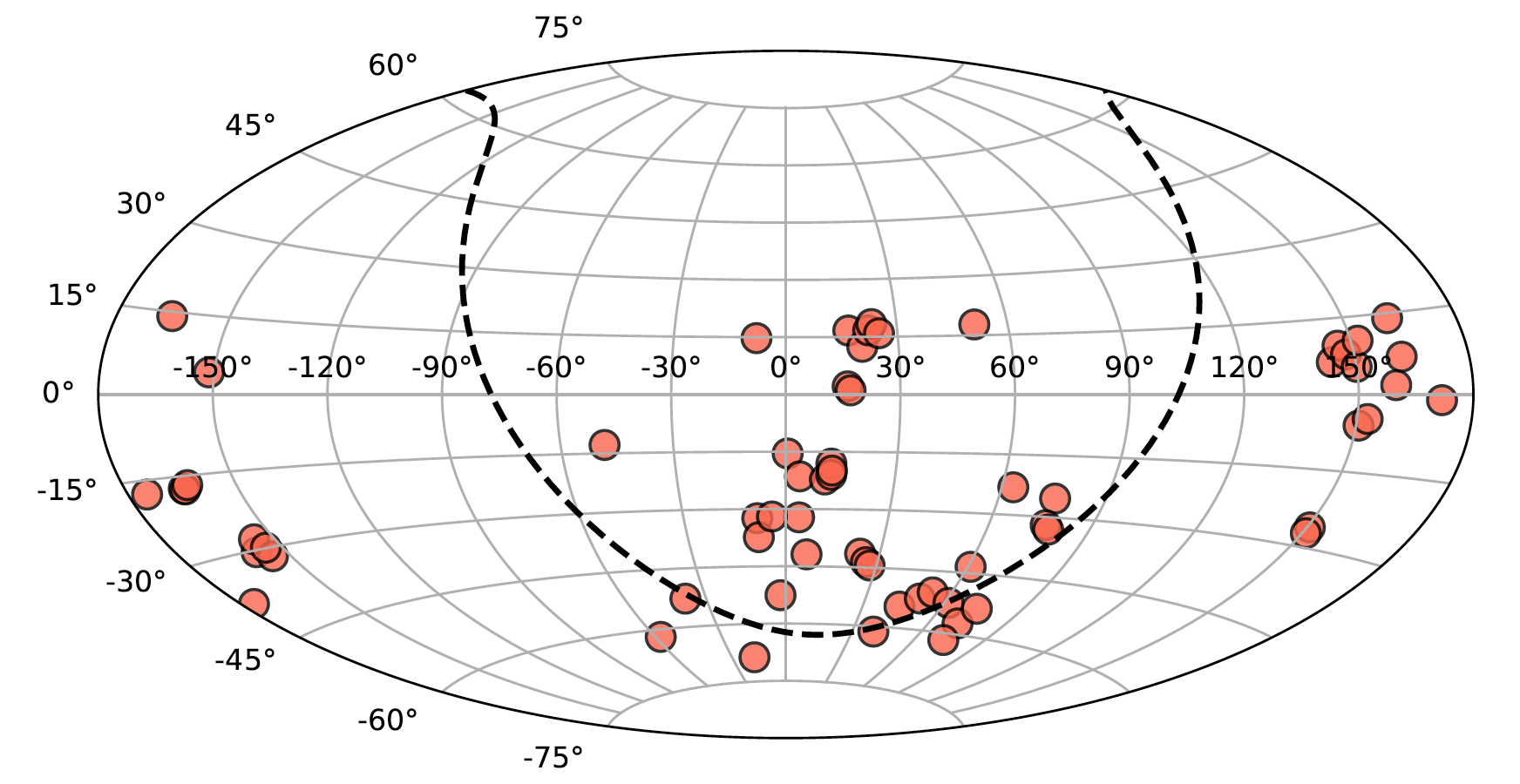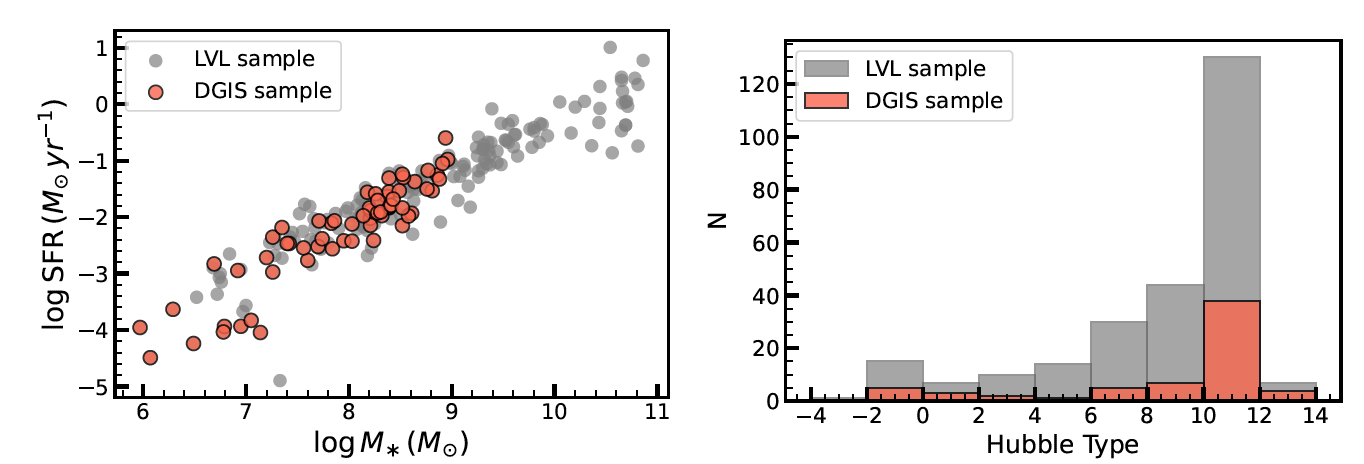

Sample
T he sample in DGIS is representative by including all objects in the Spitzer LVL program with declination (DEC) less than 20 degree, stellar mass lower than 10^9 solar mass, and distance less than 11 Mpc, based on the properties provided in Table 1 of Dale et al. (2009). The final sample is composed of 65 objects, with the Small Magellanic Cloud (SMC) excluded. Their basic properties are summarized The sample covers a distance ranging from 0.44 to 11.4 Mpc, except for two objects located largely beyond 11 Mpc, according to the updated distance data from NED. The stellar masses range from 1e6 solar mass to 1e9 solar mass, with 60% of the sample falling within the 1e8 - 1e9 solar mass range. The sample includes all Hubble types, with a majority of them being dwarf irregulars.
